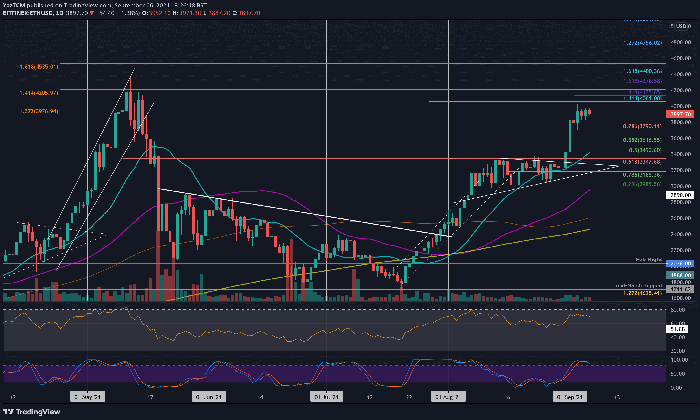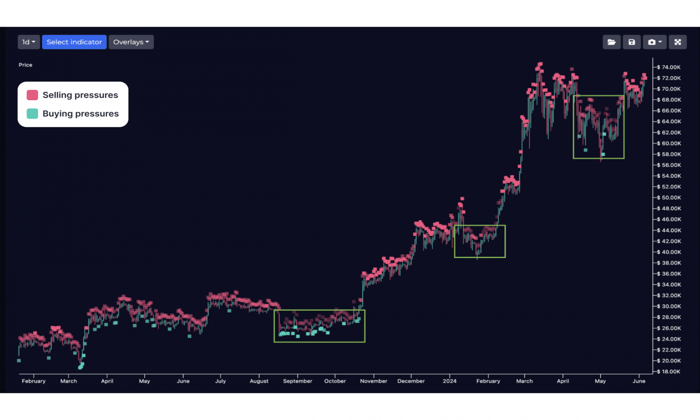The recent discovery of a security flaw in the XRP Ledger SDK has sent shockwaves through the crypto community. This critical loophole, identified by Aikido Security, specifically pertains to the JavaScript SDK utilized by the XRP Ledger, raising alarms about a potential backdoor vulnerability. With compromised versions of the Node Package Manager (NPM) software found to be stealing private keys, an XRP Ledger exploit could have dire consequences for unsuspecting users. As a result, the XRP Ledger Foundation has issued urgent security warnings, advising developers and cryptocurrency holders to remain vigilant. This incident underscores the importance of XRPL security and the need for proactive measures to protect digital assets in a landscape rife with threats.
In recent events, the XRP Ledger’s JavaScript toolkit has faced serious scrutiny due to a significant security breach. This incident has revealed that certain software versions were manipulated to enable unauthorized access, thereby threatening the integrity of user private keys. Such vulnerabilities, often referred to as backdoor exploits, pose a considerable risk to developers and users alike. The findings from security experts at Aikido Security highlight the necessity for robust protective measures within software ecosystems, particularly in the context of blockchain technology. As cryptocurrency platforms like the XRPL evolve, addressing such issues becomes crucial to maintaining trust and security within the financial technology landscape.
Understanding the XRP Ledger SDK Security Flaw
The recent discovery of the XRP Ledger SDK security flaw raises significant concerns for developers and users alike. Aikido Security’s announcement of compromised JavaScript packages highlights a backdoor exploit that directly targeted private key security. Security vulnerabilities in development kits, especially in widely used libraries like the XRPL, emphasize the need for vigilant cybersecurity practices in software development. With the rise of crypto assets, the implications of such exploits can be catastrophic, leading to significant financial losses and a breach of user trust.
The XRP Ledger Foundation’s immediate response underlines the critical nature of the situation. By confirming the malicious modifications and urging developers to be proactive, the foundation is attempting to safeguard the XRPL ecosystem. This incident illustrates how even well-established frameworks can be vulnerable if proper security measures are not followed. Therefore, developers must prioritize robust security protocols and conduct thorough audits on dependencies in their codebases.
Corrective Actions Taken by XRPL Foundation
In response to the security breach, the XRP Ledger Foundation swiftly released a patched version of the JavaScript SDK, eliminating the backdoor vulnerability. This quick action demonstrates a commitment to user safety and the importance of maintaining integrity within the XRPL infrastructure. The effort to remove the malicious code ensures that developers can rely on a clean and secure toolkit when interacting with the XRPL, ultimately restoring confidence in the platform.
The foundation also recognized the necessity of improved monitoring systems, which was a key factor in how Aikido Security identified the issue. By implementing automated threat detection and rigorous package validation processes, the risks of another security exploit may be mitigated in the future. The collaborative approach between security researchers and the foundation is a crucial step toward improving the overall security posture of the XRPL ecosystem.
Long-Term Security Implications for XRPL Users
The ramifications of the XRP Ledger SDK security flaw extend beyond immediate financial concerns; they serve as a wake-up call to all XRPL users. With the potential for future exploits, individuals and organizations must be more vigilant in their security practices. Regular security audits, monitoring software for updates, and ensuring dependencies are secure should become standard practices for any entity utilizing XRPL technology.
Moreover, user education on protecting private keys is critical. As Wietse Wind remarked, anyone who created an XRP wallet with the compromised tools should promptly assume their assets were at risk. Implementing multi-factor authentication, using hardware wallets, and segregating funds can enhance security for users against similar threats in the future.
The Role of Aikido Security in the Incident
Aikido Security played a pivotal role in uncovering the backdoor vulnerability within the XRPL’s JavaScript SDK. Their automated threat monitoring system, which flagged the suspicious updates, was crucial in identifying the modified packages before a larger catastrophe could ensue. This highlights the importance of having specialized cybersecurity teams actively monitoring software environments for anomalies.
The incident showcases the essential collaboration between cybersecurity researchers and software developers in maintaining the integrity of blockchain technologies. As cyber threats evolve, partnerships like those between Aikido Security and the XRP Ledger Foundation will be critical in promptly addressing vulnerabilities and safeguarding the future of decentralized finance.
Best Practices for Secure Development on XRPL
To prevent future security lapses akin to the XRP Ledger SDK exploit, developers should adhere to best practices in secure coding. Utilizing tools that scan for malware and vulnerabilities should be a part of the development lifecycle. Employing continuous integration and delivery (CI/CD) pipelines that emphasize security testing can catch potential vulnerabilities early and reduce the risk of deploying compromised code.
Additionally, developers should engage in community forums and discussions surrounding XRPL security issues to share knowledge and strategies. By fostering a culture of knowledge sharing and continuous improvement in development practices, the entire XRPL ecosystem can enhance its resilience against potential attacks.
The Importance of Transparency Following an Exploit
Transparency in communication after a security breach is essential for maintaining user trust. Following the discovery of the vulnerability in the XRPL SDK, the XRP Ledger Foundation’s public acknowledgment and proactive measures served to reassure the community. Clarity regarding the nature of the exploit, its implications, and how it was addressed can greatly alleviate fears among users.
Furthermore, continuous updates regarding security measures and improvements can help to reinforce confidence in the platform. By remaining transparent and maintaining open lines of communication, organizations can effectively manage their reputation and encourage safe practices among their user base.
Future of XRPL and Institutional Adoption
The security breach coincides with Ripple’s plans for significant institutional adoption, following its acquisition of Hidden Road, a prime brokerage firm. As Ripple aims to position the XRPL as a main conduit for corporate transactions, addressing security vulnerabilities becomes even more critical. The integration of secure practices into the development and deployment of XRPL technologies will be vital in attracting institutional investors who require high levels of trust and security.
Furthermore, the success of these initiatives depends heavily on an ecosystem that prioritizes security. As institutions consider the XRPL for post-trade settlements, they will scrutinize the effectiveness of security measures in place. Hence, Ripple and the XRP Ledger Foundation must focus on establishing robust security protocols to guarantee the safety of assets and reassure potential stakeholders.
The Broader Impact of Crypto Security Vulnerabilities
The XRP Ledger SDK exploit serves as a microcosm of the larger issues facing the cryptocurrency landscape. As more developers adopt blockchain technology, the need for security in software frameworks becomes paramount. Each incident of a security vulnerability threatens the progress of blockchain adoption as it shakes user confidence and invokes skepticism among potential participants.
As the industry matures, a collective effort must be made by developers, security experts, and organizations to create a robust culture surrounding cybersecurity. This includes instituting best practices in development, prioritizing audits, and fostering a community dedicated to preventing exploits. Such proactive measures will be essential in ensuring that the growth of cryptocurrencies is built on a foundation of trust and resilience.
Managing Risks in Third-Party Dependencies
The incident surrounding the XRP Ledger SDK underscores the risks inherent in relying on third-party packages in software development. As demonstrated, compromised packages can expose developers and users to significant vulnerabilities that might otherwise have gone unnoticed. This reality necessitates a culture of due diligence in the management of external libraries within the XRPL ecosystem.
Adopting strategies such as regularly updating dependencies, employing tools for vulnerability scanning, and audit processes can help mitigate risks associated with third-party code. Developers should provide transparent documentation of any external libraries they utilize and consider alternatives that prioritize security, thereby enhancing the resilience of their applications against potential exploits.
Frequently Asked Questions
What is the XRP Ledger SDK security flaw?
The XRP Ledger SDK security flaw refers to a critical vulnerability found in specific versions of the XRPL JavaScript SDK (versions 4.2.1-4.2.4 and 2.14.2) that were exploited to create a backdoor. This backdoor allowed malicious actors to steal users’ private keys by sending them to an external server. The XRP Ledger Foundation confirmed this security threat, urging users to take immediate action to secure their wallets.
How does the XRP Ledger exploit compromise private keys?
The XRP Ledger exploit involves modified versions of the xrpl npm package, which contained malicious code that sent generated or imported private keys to an attacker’s server. This flaw allowed hackers to collect key pairs and wait for wallets to be funded before stealing the assets, raising significant concerns about the security of JavaScript SDKs used with XRPL.
What are the implications of the backdoor vulnerability in the XRPL SDK?
The implications of the backdoor vulnerability in the XRPL SDK are severe, as it compromised the security of user wallets, potentially leading to significant financial losses. Users who created wallets using the affected versions of the SDK are urged to assume that their keys were compromised and to transfer their funds immediately to secure wallets.
What protective measures should developers take against XRPL security warnings?
To protect against XRPL security warnings such as the recent SDK exploit, developers should implement several measures: limit publishing access to their packages, scan their code for vulnerabilities before release, avoid automatic publishing pipelines, and ensure they don’t manage private keys unless they are fully prepared for the associated risks.
How did Aikido Security identify the XRPL security flaw?
Aikido Security identified the XRPL security flaw through its automated threat monitoring system, which flagged suspicious updates to the XRPL package on NPM. They discovered that the compromised versions were published by a user named ‘mukulljangid’ and contained malicious functions aimed at capturing private keys from new wallet creations.
What actions should users take following an XRPL SDK security compromise?
After an XRPL SDK security compromise, users should immediately transfer funds from any wallets created using the affected SDK versions. It’s also advisable for users to update to the clean version of the NPM package released by the XRP Ledger Foundation and to regularly monitor their wallet security.
What steps did XRP Ledger Foundation take in response to the SDK security flaw?
In response to the SDK security flaw, the XRP Ledger Foundation released a clean version of the NPM package, removing the malicious code and ensuring the SDK’s safety for developers. They also provided warnings to users regarding the potential risks and recommended immediate action for anyone using the compromised versions.
Can the malfunctions in XRPL SDK affect applications beyond the XRP ecosystem?
Yes, the malfunctions in the XRPL SDK, particularly the backdoor vulnerability, can affect applications that depend on the compromised SDK. This highlights the importance of maintaining robust security practices across all blockchain-related technologies and vigilant monitoring for potential exploits.
| Key Points | Details |
|---|---|
| Security Flaw in XRPL SDK | A critical vulnerability was found in XRPL’s JavaScript toolkit, with several NPM packages modified to steal private keys. |
| Affected Versions | Versions v4.2.1 to v4.2.4 and v2.14.2 of the xrpl npm package were confirmed to contain malicious code. |
| Discovery of the Flaw | Identified by Aikido Security on April 21, 2025, through an automated threat monitoring system. |
| Backdoor Mechanism | The malicious code sent generated or imported private keys to an external server controlled by the hacker. |
| Response from XRPL Foundation | A clean version of the SDK was released, removing the malicious code and ensuring security for developers. |
| Advice for Users | Users with wallets created using the compromised packages are urged to assume they were compromised and transfer their funds. |
| Developer Precautions | Developers should limit publishing access, scan code before release, and handle private keys with care. |
Summary
The XRP Ledger SDK security flaw has raised significant concerns within the cryptocurrency community due to its potential to expose private keys to attackers. Discovered by Aikido Security, this critical vulnerability existed in several modified versions of the JavaScript SDK and allowed hackers to steal assets from unsuspecting users. The XRP Ledger Foundation’s swift action to release a clean version of the SDK demonstrates their commitment to maintaining the security of the platform. As the incident highlights the vulnerability of software relying on third-party libraries, developers and users alike must remain vigilant and take necessary precautions to protect their assets.
The XRP Ledger SDK security flaw has raised significant concerns among developers and users alike, as a recently discovered backdoor exploit threatens the integrity of the XRPL ecosystem. This vulnerability, identified in certain versions of the JavaScript SDK, has the potential to jeopardize private key security and user assets. Researchers from Aikido Security revealed that malicious code in the compromised npm packages was crafted to discreetly send sensitive data to an external server. As a result, the XRP Ledger Foundation swiftly issued a security warning, urging all users who may have interacted with these affected versions to take immediate action to safeguard their wallets. With the ongoing evolution of threats in the cryptocurrency landscape, vigilance and proactive updates are paramount for preserving XRPL security amidst this alarming exploit.
In the realm of cryptocurrency development, recent reports highlight alarming issues with the XRPL developer toolkit, underscoring the presence of significant vulnerabilities. This JavaScript package, which serves as a critical integration point for the XRP Ledger infrastructure, has been compromised by a backdoor exploit, leading to warnings from security experts. Aikido Security’s findings have raised awareness about the manipulation of software components that jeopardize private key safety, thereby emphasizing the importance of robust security measures in fintech applications. Developers are now urged to reassess their reliance on third-party libraries to prevent exploitation. As these incidents unfold, the pressing need for comprehensive security protocols in the XRPL framework becomes ever more evident.















